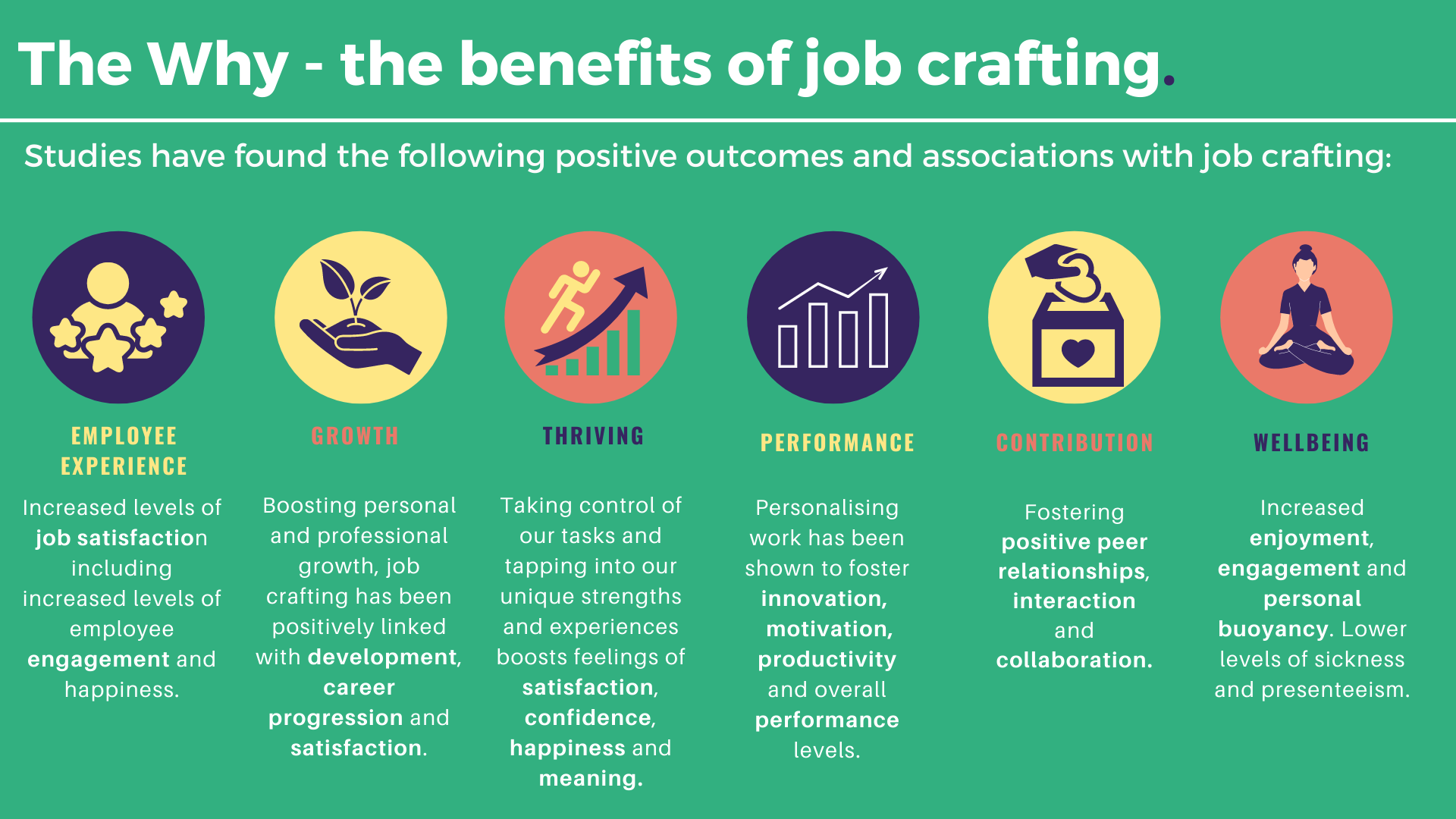A sense of purpose is a defining human need for us all. Yet, despite this universal personal requirement, the ‘why’ of work and the power of purpose is often overlooked when it comes to our jobs.
As lockdown eases and the way we work is transitioning, there has never been a better, or arguably more important, time to focus attention and discussions about the value and purpose of what we do.
How can organisations and HR leaders revive or recalibrate a sense of purpose and amplify engagement and performance along the way?
One evidence-based and practical way to do this is by purpose crafting. Purpose, or cognitive, crafting is a type of job crafting that involves shaping and reframing how we think about the value and purpose of our work.
The 4 key types of purpose crafting.
There are four key types of purpose crafting; broadening, narrowing, finding; and personalising purpose.
Broadening
We can connect to the wider purpose of our work by looking at the bigger picture in terms of who benefits from the work that we’re doing.
An example of broadening is a customer service operator in a bank reframing their daily tasks from dealing with individual issues, to providing a key service to customers to support their financial welfare.
Narrowing
We can create a sense of purpose by focusing in on and recognising specific elements of our work which we find particularly meaningful and enjoyable.
Rather than broadening their focus, other employees may find value in focusing in on a specific aspect of their work they find particularly meaningful and enjoyable (narrowing purpose) – such as an HR business partner creating opportunities to contribute to wider business strategy.
Finding
We can connect to the purpose of our work by intentionally searching and creating opportunities to understand the impact of the work that we’re doing.
A project manager’s job crafting experiment to check in with projects they had delivered a year ago is an example of someone finding the purpose of their work. These check-ins allow them to not only hear stories about the benefits (and possible failings) of their work, but also give them other insights that will shape how they lead future projects.
Personalising
People can purpose craft by personalising elements of the work they do with the passions and interests that are important to them, which may traditionally only be displayed and showcased outside of work.
People can also ignite a sense of purpose by finding ways to connect their work with values, activities or beliefs that are meaningful and important to them on a personal rather than strictly professional basis. For example, getting involved in, or leading, sustainability or mental health initiatives or starting a weekly running group may allow people to bring outside interests into the organisation.
Bringing purpose crafting to life
Rather than giving or telling people what purpose is, leaders and HR should be concerned with creating opportunities for people to find and shape it for themselves. Here are three ways we’ve seen organisations help people find and join their personal purpose dots:
Encourage people to connect with, and directly hear from, the benefactors of their work – through focus groups, testimonials, or simple feedback.
Be explicit about discussing and defining the purpose and value of work – by defining purpose and value in job descriptions and in one-to-one discussions.
Actively invite people to bring their passions to work – by introducing employee-led skill share workshops or encouraging people to involve.
Other case studies and examples of how organisations have brought job crafting to life can be found here.
We hope that we have inspired you to make a small change to your job that will make your work more tailored to you.
By writing this blog we (Tailored Thinking) are bringing our purpose to life by inspiring and enabling people to make positive changes to their work.
To learn more on the ‘why’ of work and connecting with the meaning and purpose then you can read more here.
Also, you can click here to learn more about job crafting.




















